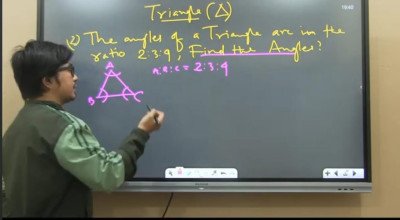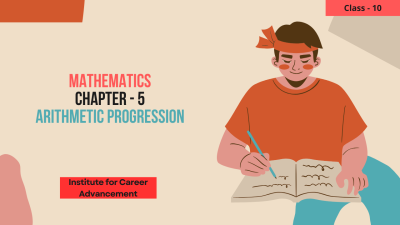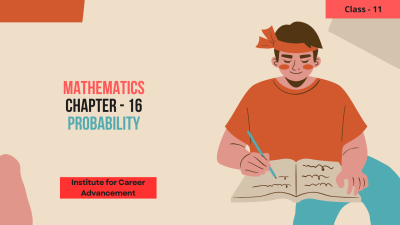Course description
Linear programming is a mathematical technique used to optimize a situation with certain constraints. In Class 12, you might study linear programming as a part of your mathematics curriculum. Here's a basic overview of what you might cover:
Introduction to Linear Programming: Understanding what linear programming is and its applications in various fields such as economics, business, engineering, and logistics.
Formulating Problems: Learning to formulate real-world problems into mathematical equations called linear programming models. These models typically involve maximizing or minimizing an objective function subject to certain constraints.
Graphical Method: Initially, you might learn graphical methods to solve simple linear programming problems. This involves plotting constraints on a graph and finding the feasible region, then identifying the optimal solution by evaluating the objective function at various points within this region.
Simplex Method: As problems become more complex, you'll likely move on to learn the simplex method, which is an algebraic approach to solve linear programming problems. The simplex method involves iteratively moving from one vertex of the feasible region to another until the optimal solution is reached.
Sensitivity Analysis: Understanding how changes in the coefficients of the objective function or constraints affect the optimal solution. This involves analyzing the impact of changes in parameters on the optimal solution and the optimal values of decision variables.
Duality: Learning about the concept of duality in linear programming, which involves creating a related problem (the dual problem) from a given linear programming problem. Duality provides insights into the relationships between primal and dual variables, as well as the relationship between primal and dual optimal solutions.
Applications: Exploring various applications of linear programming in real-life scenarios, such as production planning, resource allocation, transportation and distribution problems, diet optimization, and more.
লিনিয়ার প্রোগ্রামিং হল একটি গাণিতিক কৌশল যা নির্দিষ্ট সীমাবদ্ধতার সাথে একটি পরিস্থিতি অনুকূল করতে ব্যবহৃত হয়। 12 শ্রেণীতে, আপনি আপনার গণিত পাঠ্যক্রমের একটি অংশ হিসাবে লিনিয়ার প্রোগ্রামিং অধ্যয়ন করতে পারেন। এখানে আপনি কি কভার করতে পারেন তার একটি প্রাথমিক ওভারভিউ:
লিনিয়ার প্রোগ্রামিং-এর ভূমিকা: লিনিয়ার প্রোগ্রামিং কী এবং অর্থনীতি, ব্যবসা, প্রকৌশল এবং লজিস্টিকসের মতো বিভিন্ন ক্ষেত্রে এর প্রয়োগগুলি বোঝা।
প্রণয়ন সমস্যা: গাণিতিক সমীকরণে বাস্তব-জগতের সমস্যাগুলিকে রৈখিক প্রোগ্রামিং মডেল বলা শেখা। এই মডেলগুলি সাধারণত নির্দিষ্ট সীমাবদ্ধতার সাপেক্ষে একটি উদ্দেশ্যমূলক ফাংশনকে সর্বাধিক বা হ্রাস করে।
গ্রাফিক্যাল পদ্ধতি: প্রাথমিকভাবে, আপনি সহজ লিনিয়ার প্রোগ্রামিং সমস্যা সমাধানের জন্য গ্রাফিকাল পদ্ধতি শিখতে পারেন। এর মধ্যে একটি গ্রাফে সীমাবদ্ধতা তৈরি করা এবং সম্ভাব্য অঞ্চল খুঁজে বের করা, তারপর এই অঞ্চলের বিভিন্ন পয়েন্টে উদ্দেশ্যমূলক ফাংশন মূল্যায়ন করে সর্বোত্তম সমাধান চিহ্নিত করা জড়িত।
সিমপ্লেক্স পদ্ধতি: সমস্যাগুলি আরও জটিল হয়ে উঠলে, আপনি সম্ভবত সিমপ্লেক্স পদ্ধতি শিখতে পারবেন, যা লিনিয়ার প্রোগ্রামিং সমস্যা সমাধানের জন্য একটি বীজগণিত পদ্ধতি। সিমপ্লেক্স পদ্ধতিতে সম্ভাব্য সমাধানে পৌঁছানো পর্যন্ত সম্ভাব্য অঞ্চলের এক শীর্ষ থেকে অন্য শীর্ষে পুনরাবৃত্তভাবে সরানো জড়িত।
সংবেদনশীলতা বিশ্লেষণ: উদ্দেশ্য ফাংশন বা সীমাবদ্ধতার সহগগুলির পরিবর্তনগুলি সর্বোত্তম সমাধানকে কীভাবে প্রভাবিত করে তা বোঝা। এটি সর্বোত্তম সমাধান এবং সিদ্ধান্ত ভেরিয়েবলের সর্বোত্তম মানগুলির উপর পরামিতিগুলির পরিবর্তনের প্রভাব বিশ্লেষণ করে।
দ্বৈততা: রৈখিক প্রোগ্রামিংয়ে দ্বৈততার ধারণা সম্পর্কে শেখা, যার মধ্যে একটি প্রদত্ত লিনিয়ার প্রোগ্রামিং সমস্যা থেকে একটি সম্পর্কিত সমস্যা (দ্বৈত সমস্যা) তৈরি করা জড়িত। দ্বৈততা প্রাথমিক এবং দ্বৈত ভেরিয়েবলের মধ্যে সম্পর্কের মধ্যে অন্তর্দৃষ্টি প্রদান করে, সেইসাথে আদি এবং দ্বৈত সর্বোত্তম সমাধানগুলির মধ্যে সম্পর্ক।
অ্যাপ্লিকেশন: বাস্তব-জীবনের পরিস্থিতিতে লিনিয়ার প্রোগ্রামিংয়ের বিভিন্ন অ্যাপ্লিকেশনগুলি অন্বেষণ করা, যেমন উত্পাদন পরিকল্পনা, সম্পদ বরাদ্দ, পরিবহন এবং বিতরণ সমস্যা, খাদ্য অপ্টিমাইজেশান এবং আরও অনেক কিছু।



















